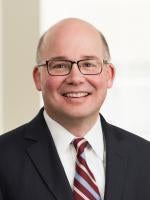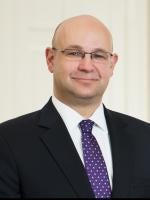As the calendar imminently turns to 2016, postsecondary institutions must be mindful of several key deadlines applicable to their Gainful Employment (GE) programs, which include all non-degree programs at public and private non-profit institutions and all programs (i.e., degree and non-degree) at proprietary institutions. In many cases, the information provided to and finalized with the U.S. Department of Education (the “Department”) in connection with these deadlines is a principal determinant of future Title IV funding for an institution’s GE programs.
Transitional Certifications
If an institution has not already submitted a transitional certification for its GE programs to the Department, due no later than December 31, 2015, it should immediately do so. Under the Department’s regulations, the required submission must be signed by the institution’s most senior executive officer (generally, a president, chancellor, or CEO) and must certify that all of the institution’s GE programs meet the requirements of 34 CFR § 668.414(d). For additional guidance on either the content or submission of such certifications, as well as the limited exception to this requirement, see the Department’s Gainful Employment Electronic Announcement #54.
Draft GE Completers Lists
Equally critical is an institution’s review of its Draft GE Completers List, which the Department indicated in Gainful Employment Electronic Announcement #71 that it will provide on an unspecified date this winter. The Draft GE Completers List is the second step, following institutional GE data reporting through the National Student Loan Data System (NSLDS) earlier this summer, in the multi-step process of calculating a GE program’s debt-to earnings rates under the Gainful Employment regulations. Once finalized, the Department will forward GE Completers Lists to the Social Security Administration (SSA) for the computation of mean and median annual student earnings for students in the GE Program for pertinent years under 34 CFR § 668.404.
Given the pivotal role the GE Completers List plays in any program’s continued eligibility for Title IV funds, it is crucial that institutions carefully review – and diligently challenge or accept – all data in the draft list provided by the Department. Under the Gainful Employment regulations, institutions will have only 45 calendar days in which to accept or challenge any entry on the Draft GE Completers List. Also, if the list is transmitted on a weekend, the 45-day period begins on the following Monday; however, there is no additional provision for extending the deadline due to weekends, holidays, or vacation periods at the receiving institution.
Practically speaking, the Department will provide the Draft GE Completers List to the electronic mailbox an institution designates through NSLDS. Electronic mailboxes are hosted by the Student Aid Internet Gateway (SAIG) and may be designated by an institution at fsawebenroll.ed.gov. If an institution has not yet designated a mailbox by the time NSLDS transmits the Draft Completers List, the receiving institution must request its list through the “Reports” tab of the NSLDS professional access site.
Upon receipt of the Draft GE Completers List, it is vital that an institution verify each proposed completer and associated data. All corrections or challenges must be submitted through the Department’s Data Challenges and Appeals Solutions (DCAS) system. Each correction or challenge must include supporting evidence; permissible bases for exclusion or challenge are set forth at 34 CFR § 668.404(e). The Department will accept or reject each proposed correction and, if rejected, provide a reason for the rejection. After the 45-day period has passed, the draft completers list will be considered final and there will be no further opportunity for institutions to adjust the data sent to SSA to calculate a GE program’s debt-to earnings rates.
As a reminder, the Gainful Employment page of the Department’s IFAP website contains the final GE regulations and related guidance documents, electronic announcements, and webinar presentations.





 />i
/>i

